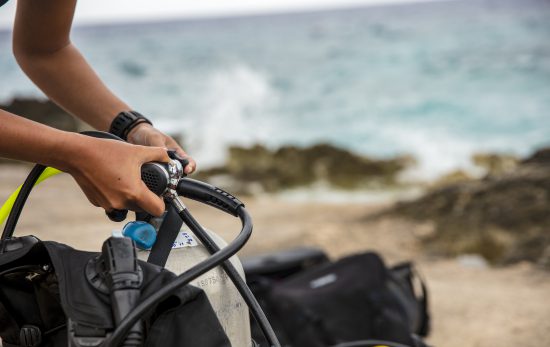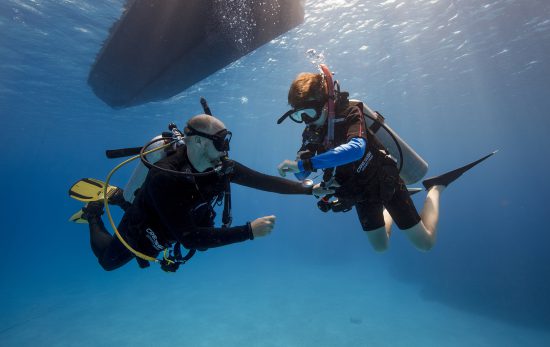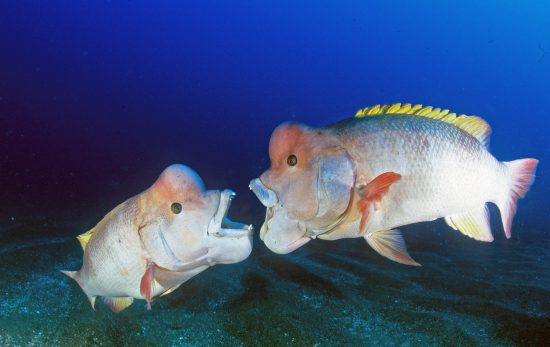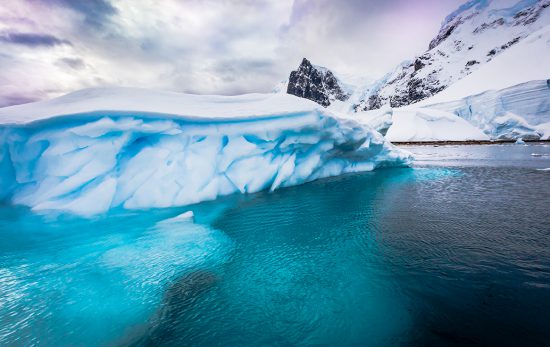Every diver imagines living the dream as a scuba diving instructor on a tropical island. However, there are more instructors working in cold water regions than you might think, training scuba divers close to home or welcoming tourists to world-class icy diving spots. When you choose your passion as a career, it often doesn’t matter where you work, as long as you’re doing what you love. So, what are some of the reasons instructors choose to work in waters that can come close to 0°C (32°F)?
I asked three experienced instructors their reasons for choosing to teach and guide scuba divers in the coldest regions of Europe. Jammi is a Bosnian instructor who works in Iceland for Dive.is; Guido is a German instructor who works in Norway; and Stéphanie is a French instructor specializing in ice diving who works in the Alps between France and Switzerland for Aquaventure.
My first surprise was that all of them learned how to scuba dive at home. Jammi started scuba diving after settling in Iceland 25 years ago; Guido learned how to scuba dive in German lakes; and Stéphanie commuted from Paris to the south of France to pass her first certification.
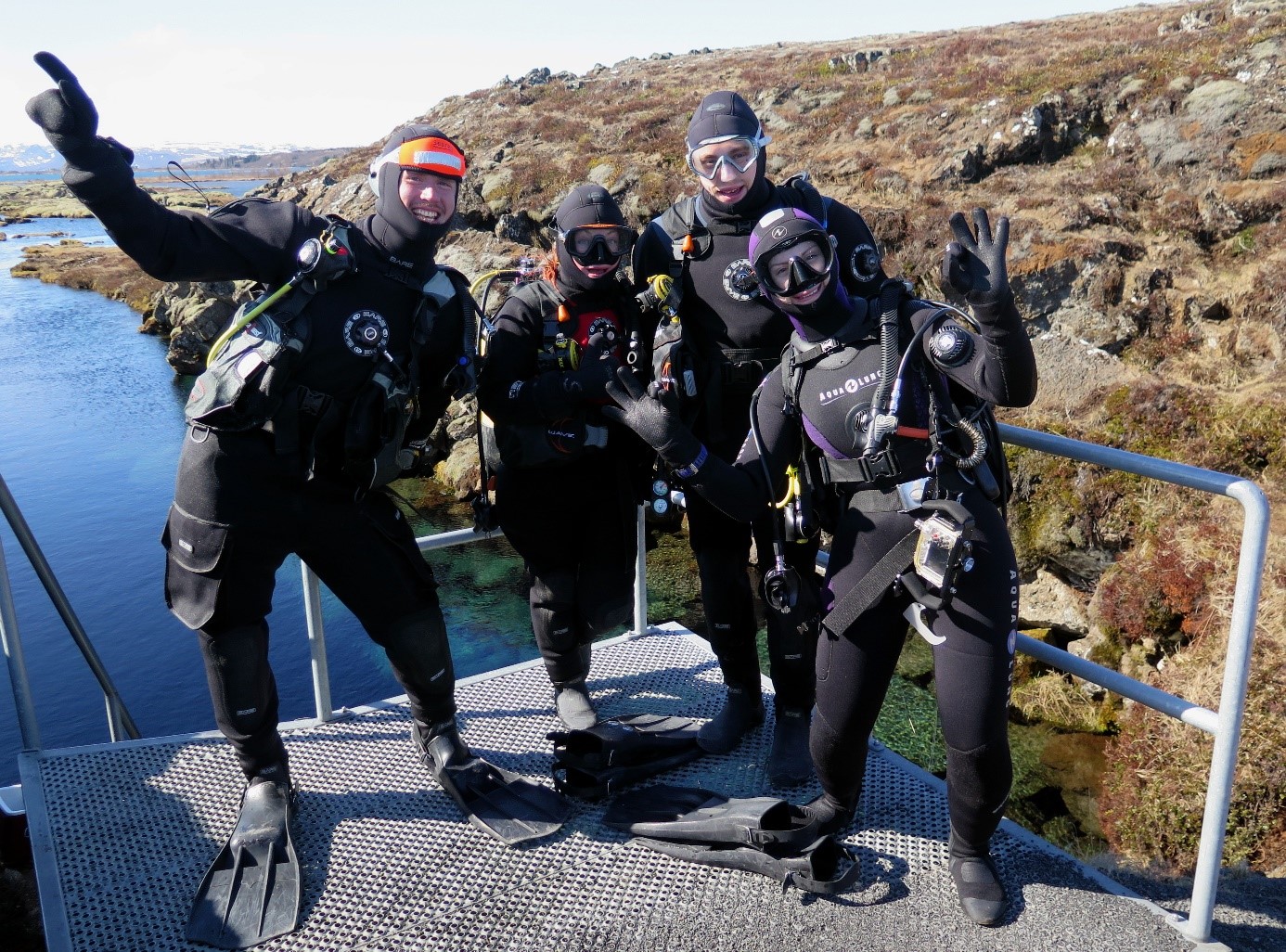
The Challenges of Working as a Diving Instructor in Cold Water Regions
The reasons these three divers chose to be scuba instructors in drysuits inspired me so much. Jammi said he feels respected by his peers when traveling abroad; Guido mentioned he was looking for better working conditions; and Stéphanie was attracted by the exciting adventures offered by extreme cold destinations. She said, “Every dive, I feel like an explorer.”
As expected, the temperatures both in the water and topside make the job challenging. As Jammi mentioned, “Basically, everything is against you.” Low temperatures equal more gear and more planning.
While it can be a fun side of the job, Stéphanie and Jammi agreed that the most problematic part usually comes from managing divers in unusual conditions. From dealing with recreational divers who struggle with buoyancy in their drysuits to demanding tec divers who fancy the thrill of cold destinations, being flexible and understanding is required for being a scuba diving instructor in cold regions.
The Rewards of Working as a Diving Instructor in Cold Water Regions
The beauty of cold water diving is not to be underestimated. Jammi and Guido tell me that most people are unaware of the biodiversity and colors that can be found in the crystal-clear waters of Iceland and Norway. In the altitude lakes of the Alps, Stéphanie fell in love with the magical atmosphere of ice diving. Having dived the transparent waters of the Silfra Fissure in Iceland, I can relate to Jammi’s statement, “It looks like flying in slow motion!”
Finally, the most fulfilling reward of being a cold-water scuba diving instructor may be, according to Jammi, the opportunity to become a better diver, a better guide, and a better instructor.
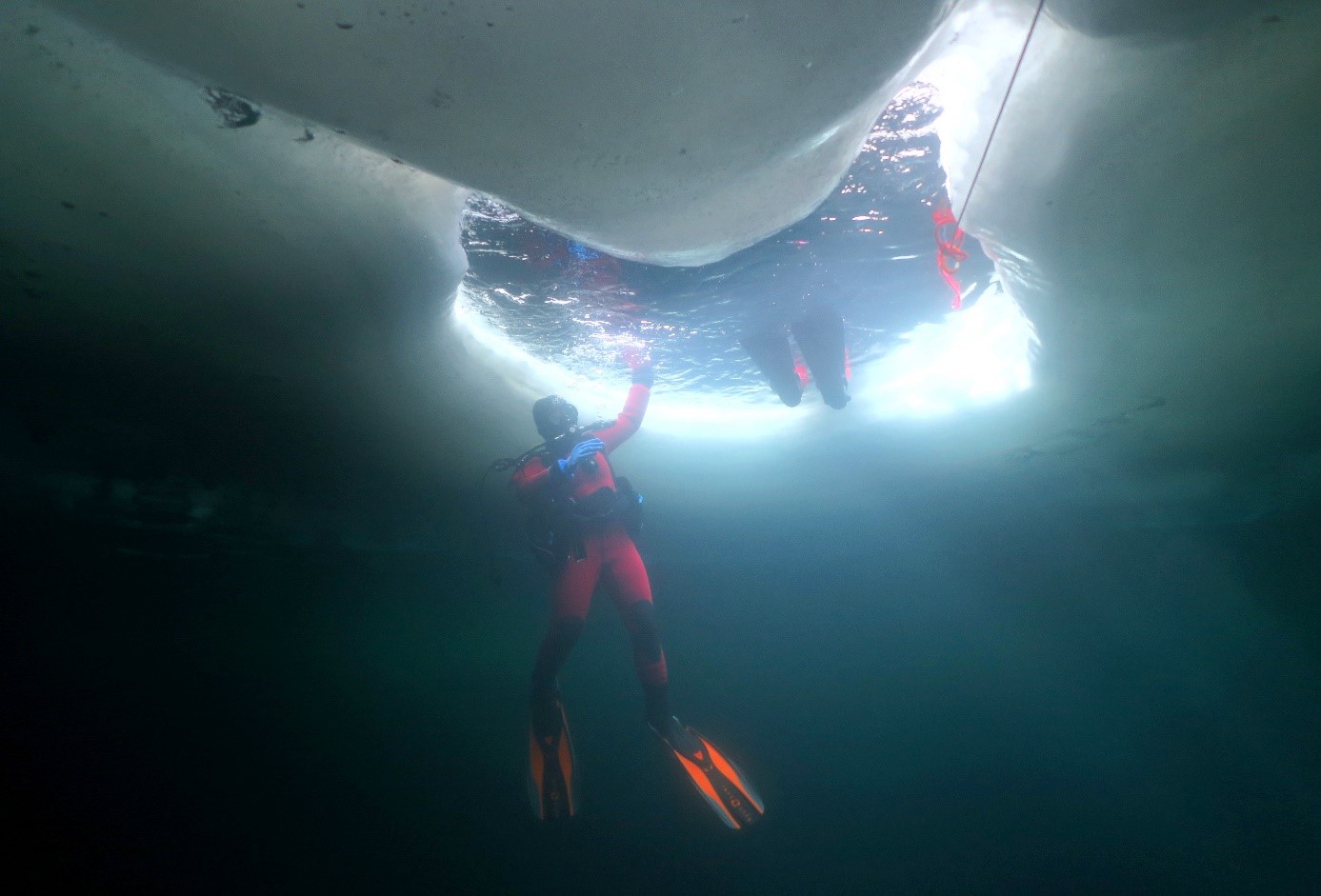
Top Recommendations for PADI Professionals Who Would Like to Try Working in a Cold Water Regions
I asked Stéphanie, Jammi and Guido for their top tips for fellow scuba diving instructors currently working in warm destinations but considering working in a colder region, whether that’s back home or in a tourist destination:
- Build experience in cold water diving before you apply for the job. It might sound obvious, but experience diving in cold water is absolutely necessary.
- Buy your own drysuit. Find the drysuit that fits you best and train to the point when you know how it works perfectly.
- Offer your unique knowledge of the area where you grew up. According to Jammi, “Guiding is not just the underwater part; it’s also about interacting with people.” If you work in the area you grew up, you can be a valuable asset for a dive center. “Customers are often eager to know more about the destination they visit. It can be historical facts or local food specialities.”
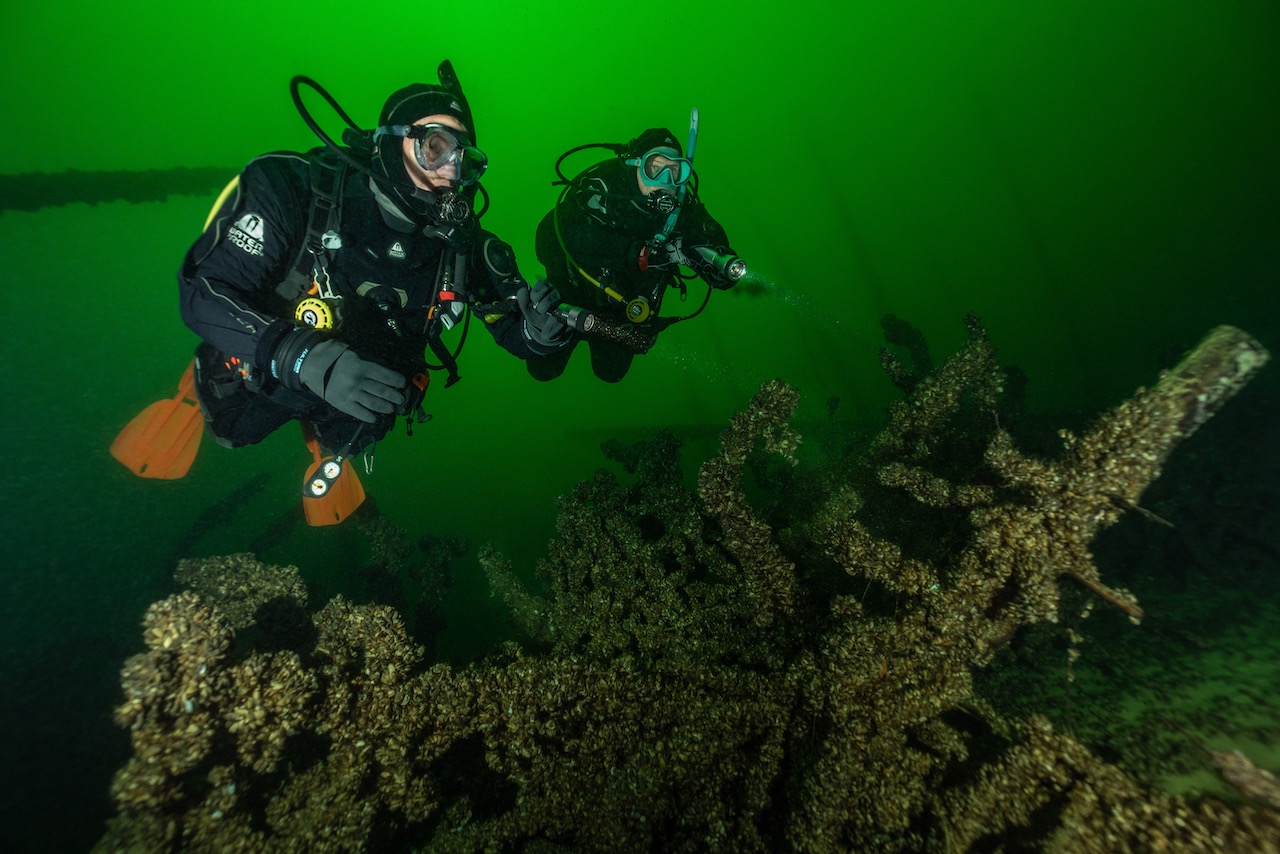
How to Become a Scuba Instructor in a Cold Water Region
If you aren’t yet a scuba diving instructor, the first step is to take the PADI Instructor Development Course (IDC), followed by the PADI Instructor Examination (IE). To enroll in the PADI IDC, you must hold a leadership-level scuba diving certification, such as the PADI Divemaster rating. You must also have 60 logged dives, be at least 18 years old, hold a current CPR and First Aid certification (like the EFR certification) and have an in-date medical approval to scuba dive.
If you’re already a scuba diving instructor, start by becoming comfortable diving in cold water and a drysuit (as we discussed above). Then, check out the PADI Job Board for an opening in your region of choice. From Canada to Japan and Iceland to the Alps, there’s a need for more cold water scuba diving instructors around the world.
Ready to live your dream of working in a cold water region? Learn more about what it means to be a PADI Professional by clicking the button below.
Author Bio
Florine is a PADI Divemaster and a Dive Travel blogger at World Adventure Divers. She dives in tropical to extreme cold waters, selecting her destinations when both adventure diving and cultural discoveries are part of the journey, and showing you how to do it without breaking the bank.
